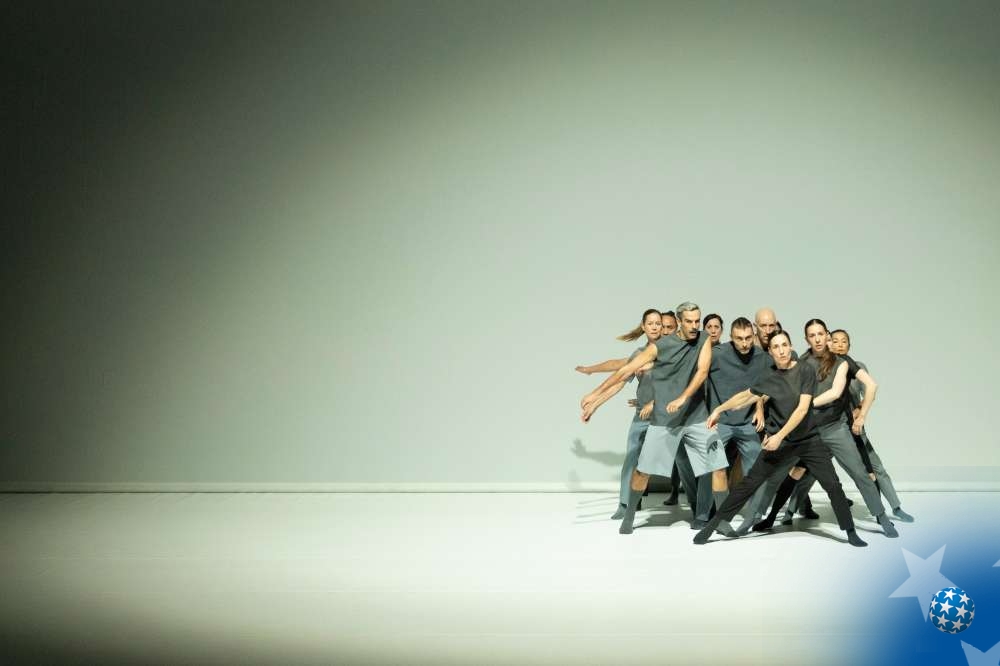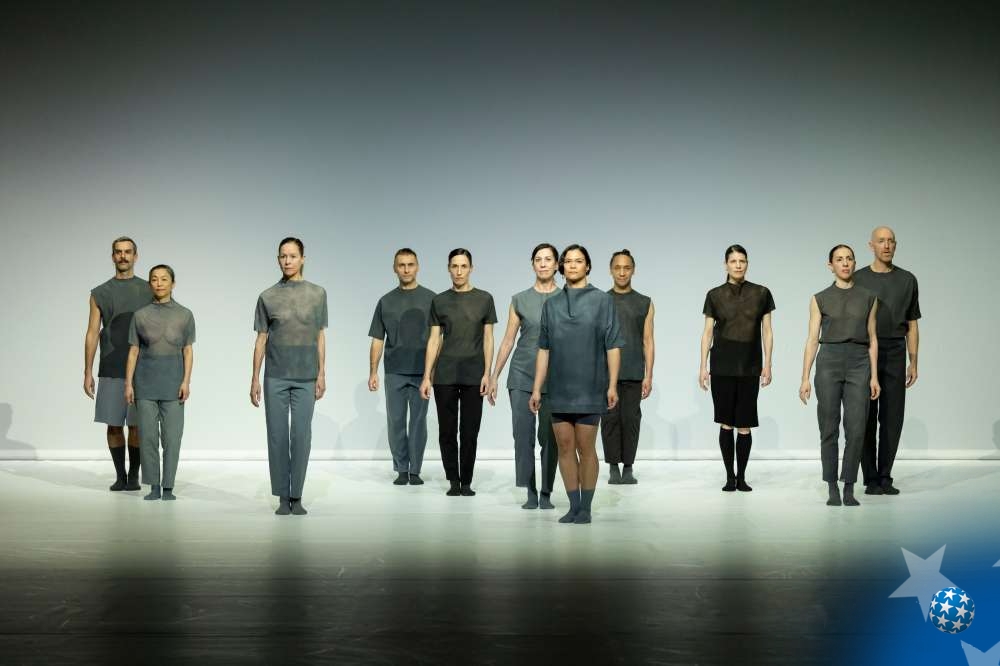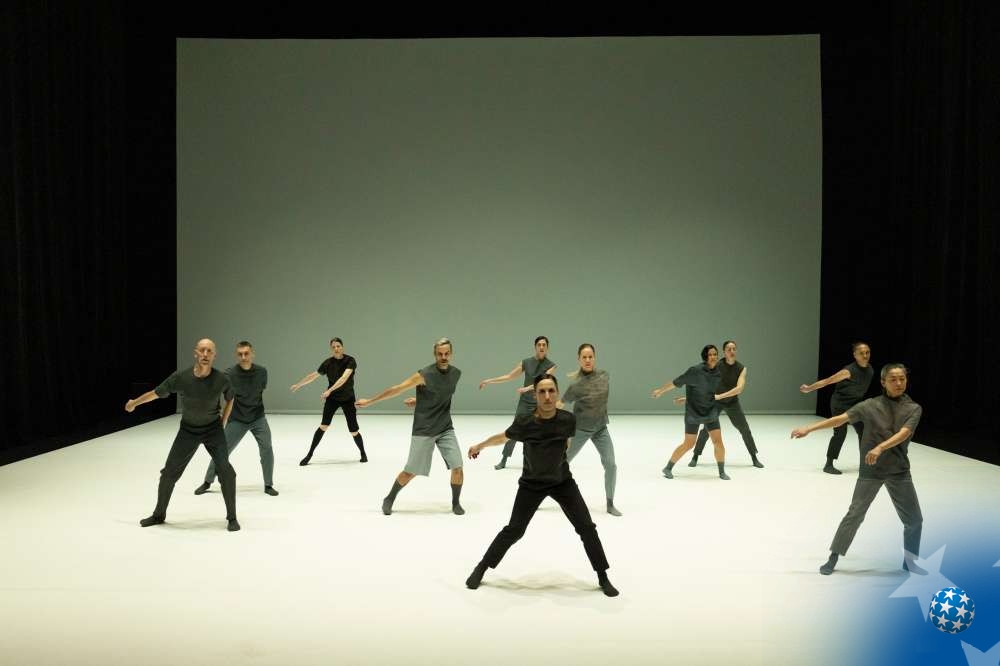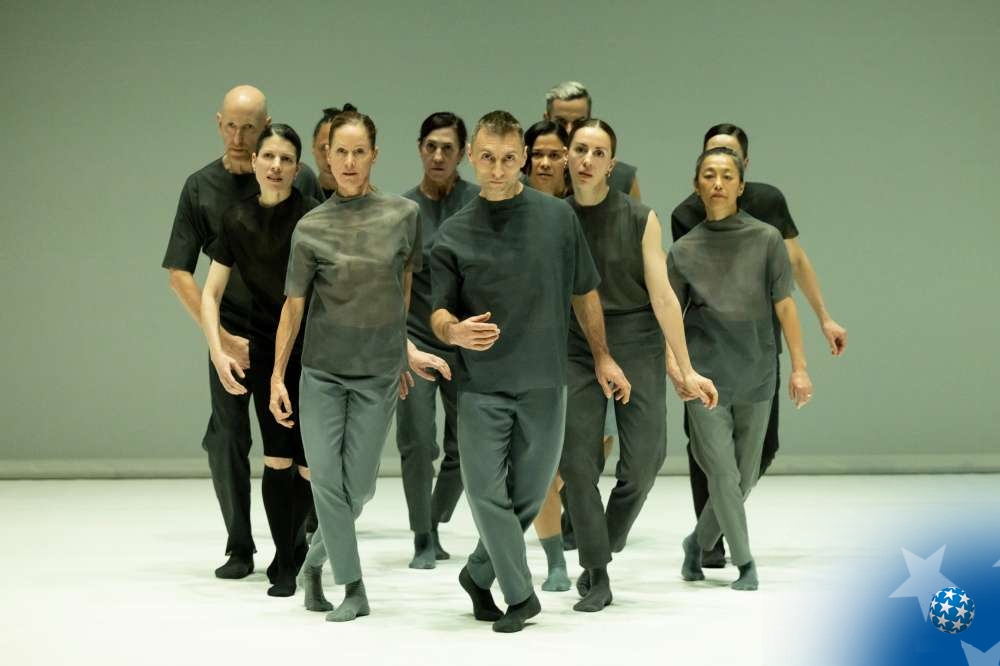Curators’ Statement
The opening ceremony of this year's festival will feature the dance performance Mellowing by the Dance On Ensemble from Berlin, co-produced with Onassis Stegi from Greece and the National Choreographic Centre Rillieux-la-Pape from France, and choreographed by Greek artist Christos Papadopoulos. The Dance On Ensemble has previously participated in the Bitef festival through a collaboration with choreographer Jan Martens, and what sets this German company apart is that its dancers are all over forty. In this collaboration with Papadopoulos, their first together, they explore the essence of the ensemble itself, posing the question of what it means to mature. How does the body mellow and change as it matures? Eleven dancers gradually fill a clean, white space, and, subtly shifting weight from one joint to another, accompanied by music composed by Italian-Greek composer Coti K. that resembles the ticking of a metronome, they explore the possibilities of human attention and concentration through a minimalist and almost meditative scenic expression. Drawing inspiration from classical dance techniques, eleven bodies synchronise minimalist movements forming collective images, assembling in diverse constellations that they occasionally break apart only to rebuild them, all the while enabling us to enjoy the beauty woven into the cracks of the seemingly strictly formalised language of the stage. Finally, the mellowing in Mellowing is precisely reflected in the subtly executed idea of individual rebellion through just barely noticeable disruptions of established limitations. Papadopoulos and the Dance On Ensemble explore moments that create a certain feeling of unrest, yet which also possess a kind of calming power, both for the bodies on stage and for those in the audience.
About the Performance
A body that is outwardly still and inwardly vibrating - what processes does the energy undergo before it breaks through? How does it change when the body matures?
In his production Mellowing Greek choreographer Christos Papadopoulos embarks on his inaugural collaboration with the dancers of the Dance On Ensemble.
Incorporating their knowledge and experience into the creation, together they explore moments of perception and intensities of the moment that create a lively restlessness, a permanent vibration in which the spectator is inevitably involved.
The Authors
Christos Papadopoulos’ works are fed by an intensely observant approach to movement and often unfold a lively and meditative power. His attention is focused on the minimal shifts of perception, the perpetual, often unnoticed and yet powerful movements that are ever-present in nature, in everyday life, within physical phenomena and political contexts. His debut Elvedon (2016) was inspired by Virginia Woolf’s novel “The Waves” and captures the continuous undulation of the sea. This was followed by Opus and his third choreography ION, an artistic exploration of the phenomenon of ionization and its underlying forces of attraction and repulsion. In his work Larsen C, he turns his attention to the micro-phenomena of movement, this time inspired by the popularised iceberg of the same name, which lost a large part of its surface in 2017. He created the choreography Mycelium with the Ballet de l’Opéra de Lyon in 2023.
The Dance On Ensemble was founded in 2015 by the Berlin-based cultural organization Bureau Ritter gUG and celebrates the artistic excellence of dancers over 40. In collaboration with internationally renowned choreographers and directors, including Rabih Mroué, Lucinda Childs, Meg Stuart and Jan Martens, the Dance On Ensemble develops a programme of innovative and challenging contemporary dance works. The aim is to create a solid foundation for a rich and ambitious repertoire for dancers aged 40 and over.
The project also addresses a core problem in our society: how older people are valued. We believe that the life experience of older people is a valuable asset but that a change in thinking is needed to recognise it. DANCE ON works to achieve such a shift: As we see it, being old is not a condition that can be rigidly defined or described in numbers. In reality, ageing is a continuous process of growth and development that everyone experiences all the time - a state of being in constant motion.
From the Reviews
“Mellowing is a school of vision. Whoever gets involved in the choreography will discover a wealth of details. And with each of the performers, individual nuances and subtleties can be discerned.
It is a joy to watch these experienced and expressive dancers. In Mellowing they manage to keep the tension, to increase the intensity and to find freedom in the strict form.
For all its simplicity, MELLOWING is a complex and fascinating evening of dance. And the Dance On Ensemble has once again proven that it is an asset to the dance scene.”
Sandra Luzina, Tagesspiegel





